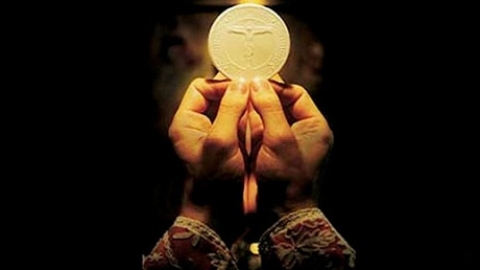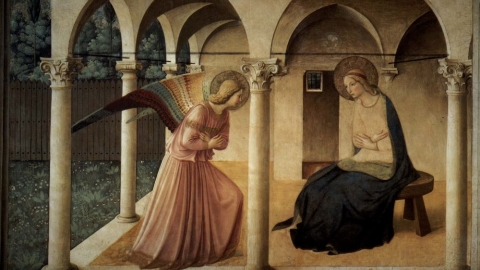Pope Francis Officially Opens the Sanctuary to Women

Messe d’intronisation d’un évêque
On January 10, 2021, Pope Francis published a motu proprio - an apostolic letter by his personal initiative - entitled Spiritus Domini. It concerns “Modifying Canon 230 §1 of the Code of Canon Law, regarding access of women to the ministries of lector and acolyte.”
To understand what it is and what is at stake, it is necessary to put the question in its historical and liturgical perspective.
Minor Orders and the Subdiaconate in the History of the Church
According to Tradition, the sacrament of Holy Orders has varying degrees. It is distinguished in major orders: priesthood, diaconate and sub-diaconate; and in minor orders: porter, lector, exorcist, and acolyte. The clear separation exists because beginning at the level of the subdiaconate, the cleric commits to perfect chastity—in the Latin Church—and can no longer normally return to the lay state—unless dispensed by the Holy See. The episcopate is itself superior to the priesthood.
The episcopate, priesthood, and diaconate are explicitly named and designated in Sacred Scripture. But minor orders and the subdiaconate only appeared gradually in the early centuries. Thus the lectorate is mentioned by Tertullian (c. 155-220). Pope Cornelius mentions porters among the lower orders in 251. He also names acolytes, exorcists, and sub-deacons.
The origin of these orders has been disputed among liturgists and theologians, but it appears that the Church intervened in their institution. However, whatever opinion one takes, development of what was contained in the priesthood or the ecclesiastical institution, their antiquity and permanence throughout the history of the Church is proven.
The Council of Trent, which was held to reject Protestantism, dedicated its 23rd session to the Sacrament of Holy Orders, since Protestants denied and refused it. One of its canons states on the subject of orders: “If anyone says that besides the priesthood there are in the Catholic Church no other orders, both major and minor, by which as by certain grades, there is an advance to the priesthood: let him be anathema” (Canon 2, DzS 962).
It is therefore of faith that there are several degrees of the sacrament of Holy Orders, some major, others minor. In particular, the holy council explicitly cites only the episcopate, the priesthood, and the diaconate. But it will specify that one should receive a lower order only with a view to the priesthood. This removes the possibility of remaining—voluntarily—at a received lower order.
Finally, it should be noted that all these orders, throughout history, have always been entrusted to the clergy, in other words to men.
The Reform of Paul VI
On August 15, 1972, Pope Paul VI, by the motu proprio Ministeria quaedam, reorganized the minor orders and the sub-diaconate. He ruled that they would henceforth be called “ministries,” and that they could be given to lay people by institution—not definitive. Only lector and acolyte are maintained, which confer the power to exercise the functions hitherto reserved for the subdiaconate.
These ministries are however reserved for men “according to the venerable tradition of the Church” and conferred by a liturgical rite. It should be carefully noted that neither the minor orders nor the subdiaconate were thereby “suppressed.” The proof is provided by the possibility given to the so-called Ecclesia Dei institutes, to use the liturgical books of 1962, and in particular the Pontifical which contains collations for all orders, major as well as minor.
The principle of this reform appears clearly in the references to which the motu proprio Ministeria quædam refers:
- No. 21 of Sacrosanctum concilium, which bases liturgical reform on the “full, active, and community” participation of the Christian people;
- No. 14 of the same constitution, which professes the same principle, but puts it in relation to the common priesthood of the faithful;
- No. 10 of Lumen gentium, finally, when it comes to explaining why the clerical state is directly attached to the reception of the diaconate: the reform will make the distinction that exists between clerics and laity more visible, as well as in their different attributions. The mutual dependence which links the common priesthood and the ministerial priesthood will then appear better.
The goal is clear: we must give full meaning to the “priesthood of the faithful,” the principle of active participation in liturgical worship, which corresponds to a priesthood in the proper sense of the term. This reform therefore wants to confer on all holders of the common priesthood as much as possible of what belonged exclusively to the ministerial priesthood. In other words, the distinction only resides at the level of the subjects who exercise these orders.
Pope Francis’s Motu Proprio
Paul VI’s reform lacked logic, however, by reserving new ministries for single men. Here is how Fr. Jean-Michel Gleize explains it in a recent article on the website laportelatine.org:
“If one takes into account the presuppositions of this reform of Paul VI, such as they derive from the Second Vatican Council, the fact that “to be instituted reader and acolyte” is “reserved to men” is in contradiction with its spirit.
“In fact, the common priesthood is characteristic of the baptized as such, without distinction of sex. If one decides that the attribution of ministries to non-clerics should find its deep motivation in the principle of this common priesthood, one does not see why the ministries could not be entrusted to women.”
“If we invoke, as Paul VI did, ‘the venerable tradition of the Church,’ we must be coherent and take the logic to its end: this ‘venerable tradition’ not only excludes the priesthood of women but also the very principle of the ‘common priesthood.’ If it is invoked to admit this one while excluding that one, that is just a bad excuse, one that does not conceal its inconsistency.”
“It is to remedy this lack of logic that Pope Francis...is revising the reform of Paul VI by deciding that the ministries of lector and acolyte can henceforth be entrusted to women.”
“Beyond the newsworthy, and fleeting, shock that this decision may cause, what remains is the logic of Vatican II, become consistent with itself. Moreover, this new provision of law only consecrates the fact already well established under Francis’ predecessors—John Paul II and Benedict XVI.
“Here, as elsewhere, custom has indicated the true spirit of the law, in this case the spirit of Vatican II, which steadily moves further away from ‘the venerable tradition of the Church.’”
What remains is a breakdown of the liturgical rite between various actors of an essentially different rank, introducing an ever deeper confusion on the place of the priest, and allowing the most radical to dream of the possibility—prohibited by divine law—of one day seeing the priesthood conferred on women.
Related links
(Source : Dictionnaire de théologie catholique/Vatican.va/La Porte Latine - FSSPX.Actualités)
Illustration : Alamy / John Fryer


